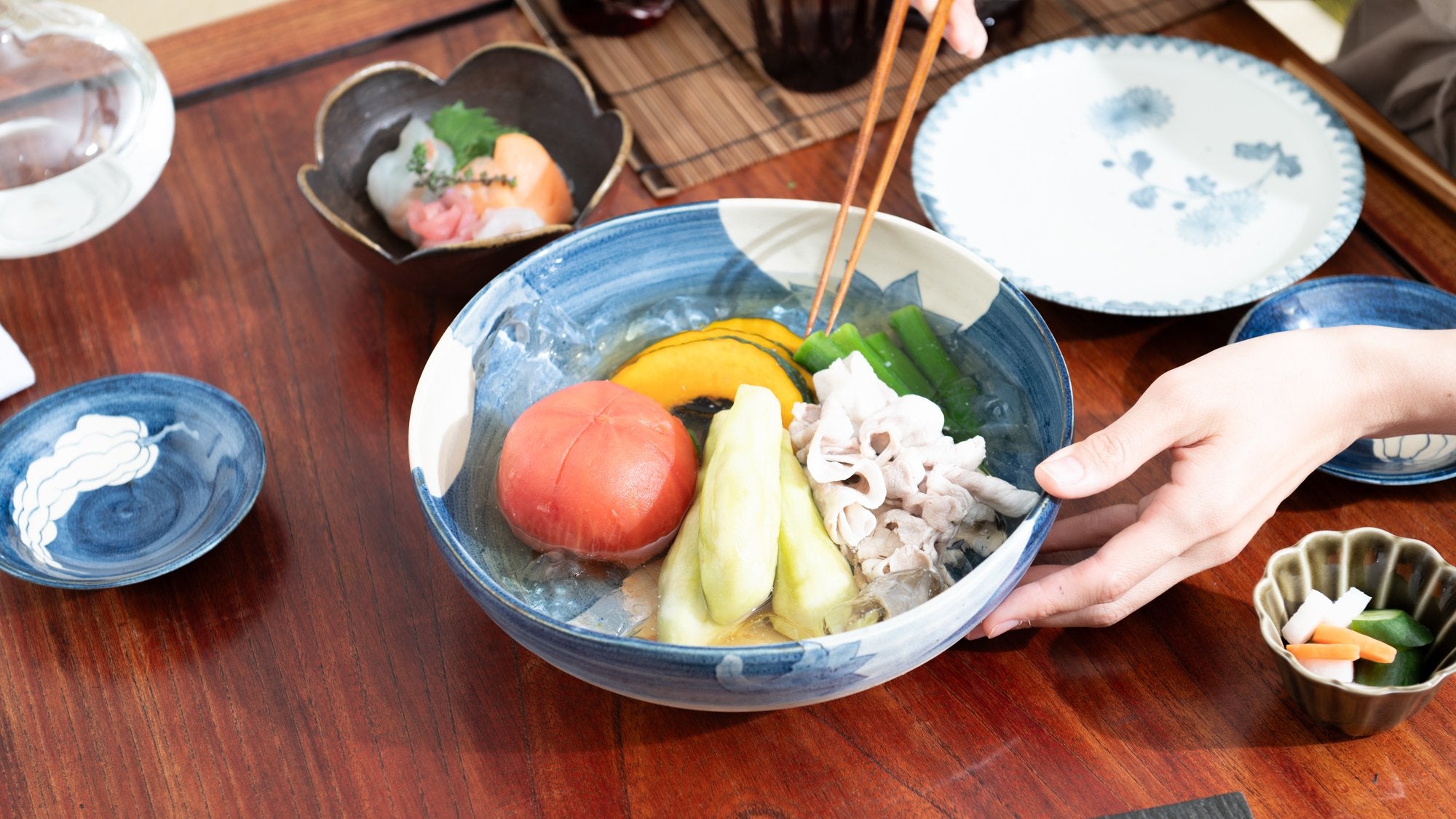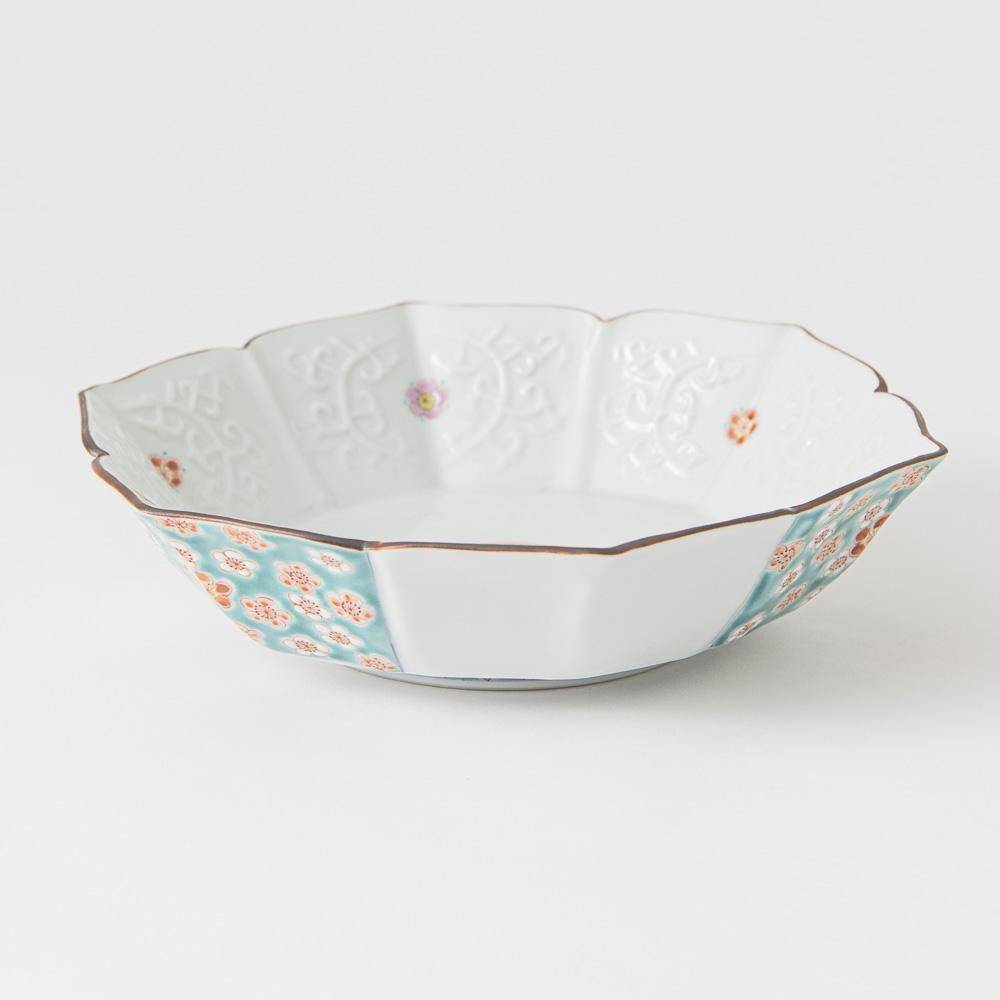
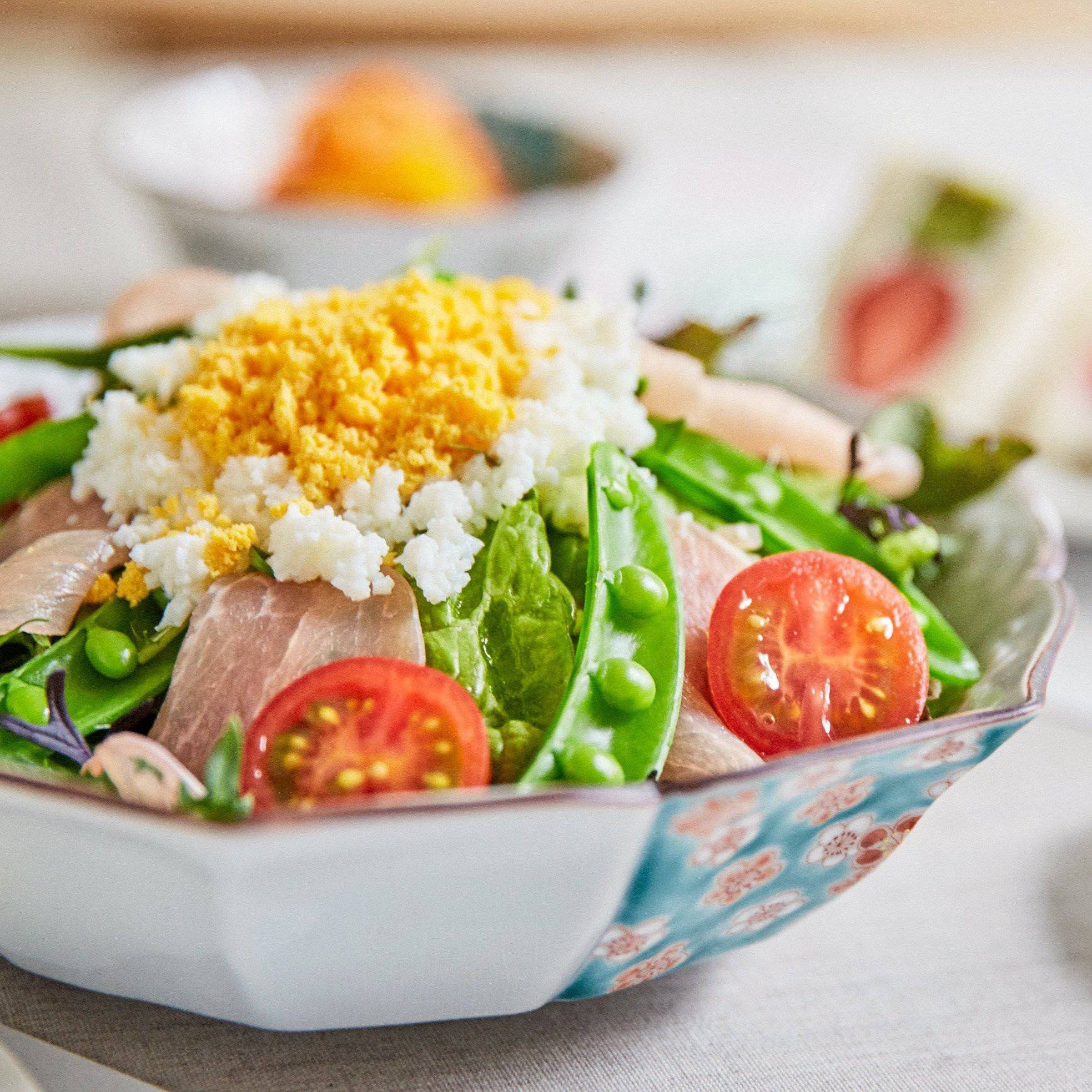
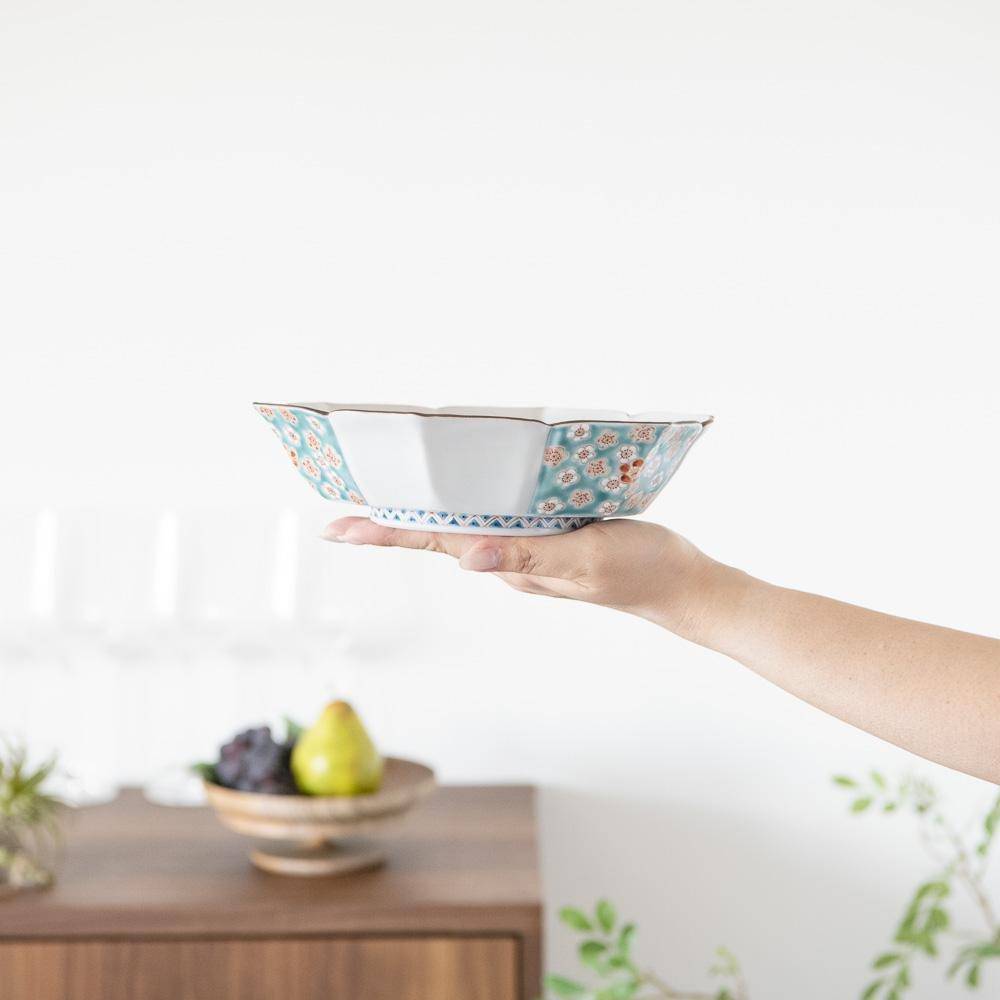
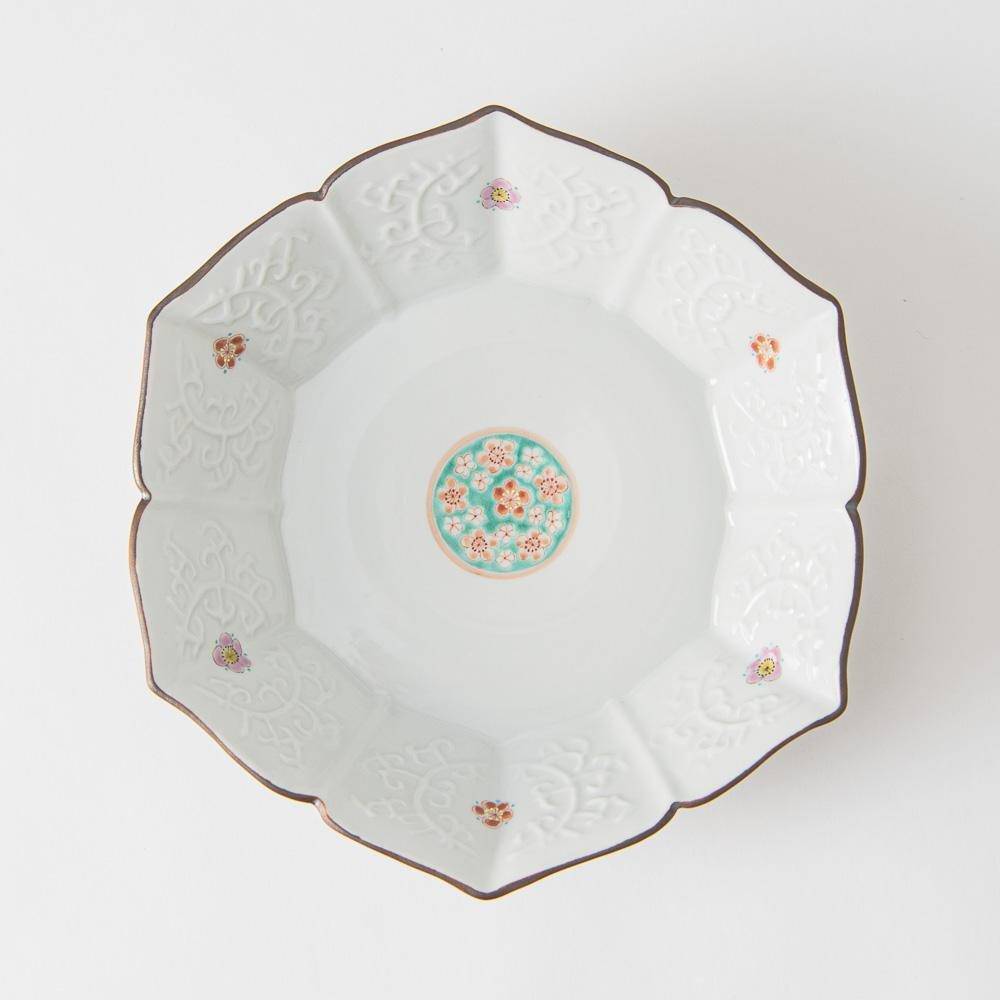
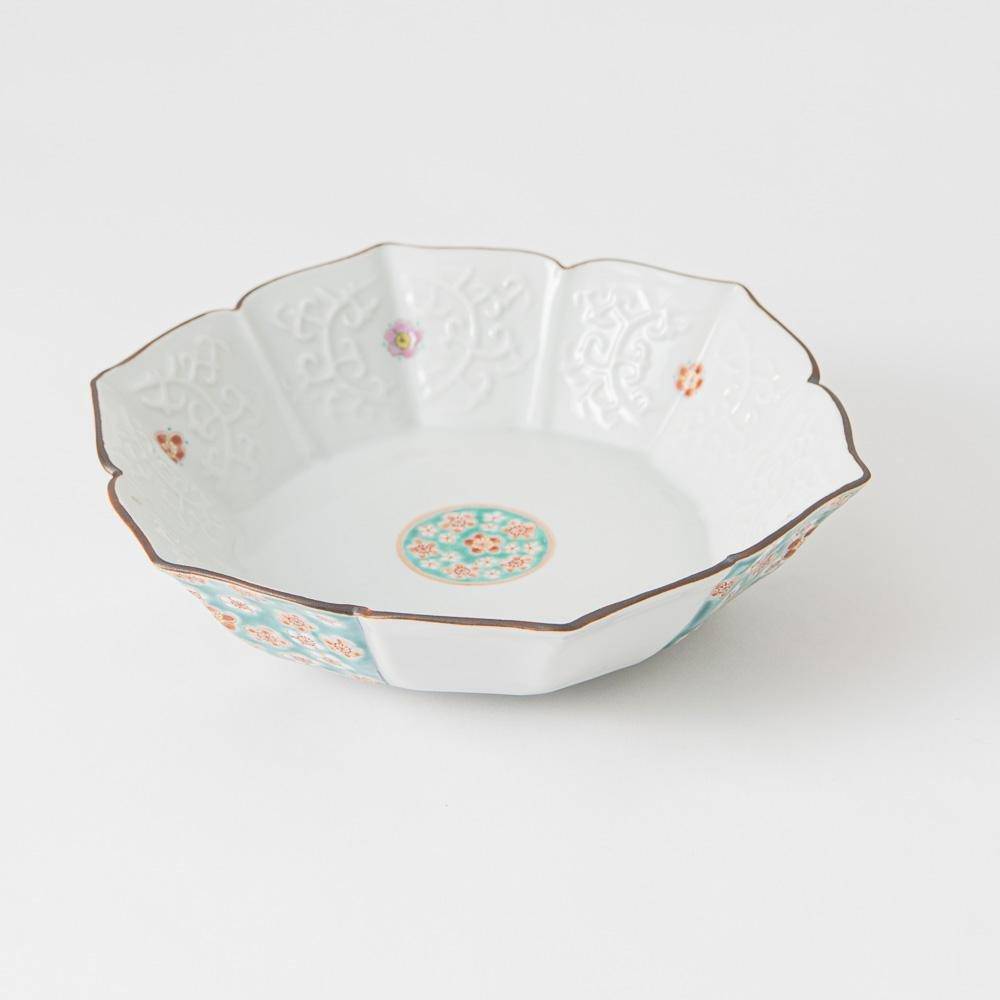
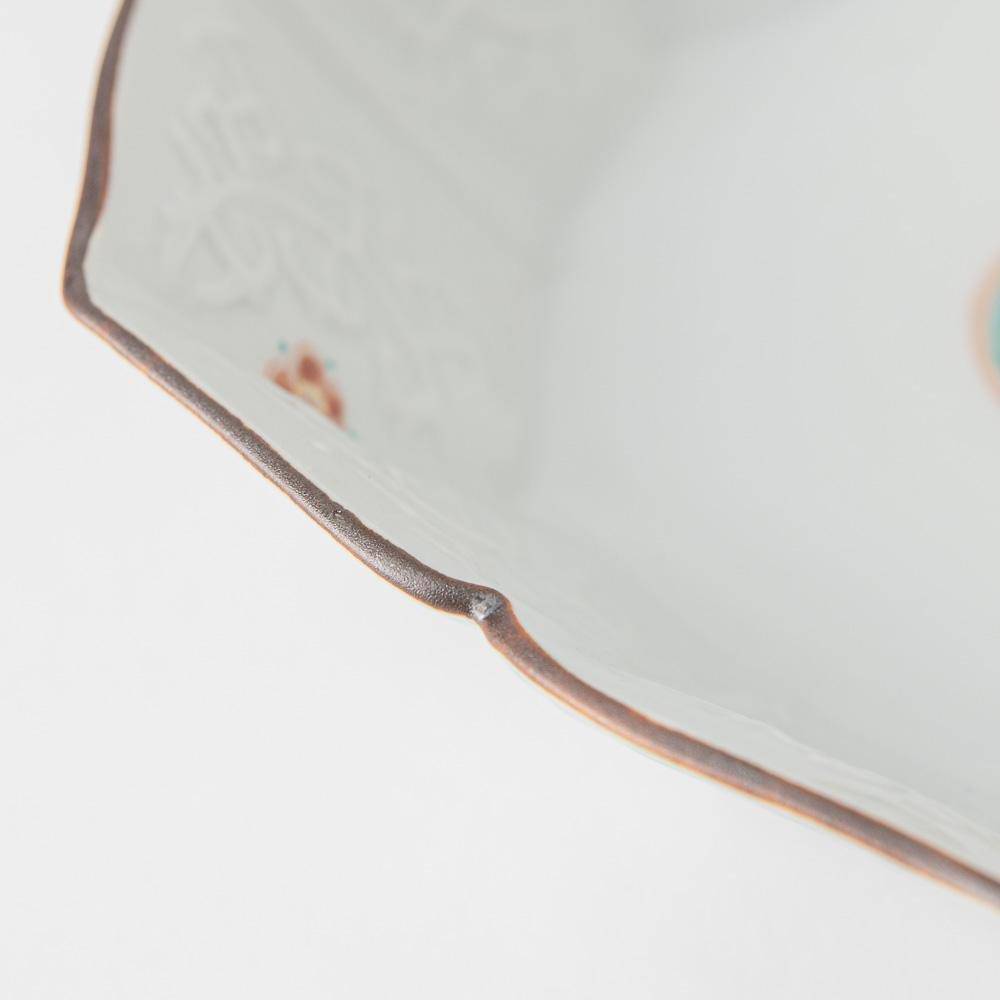
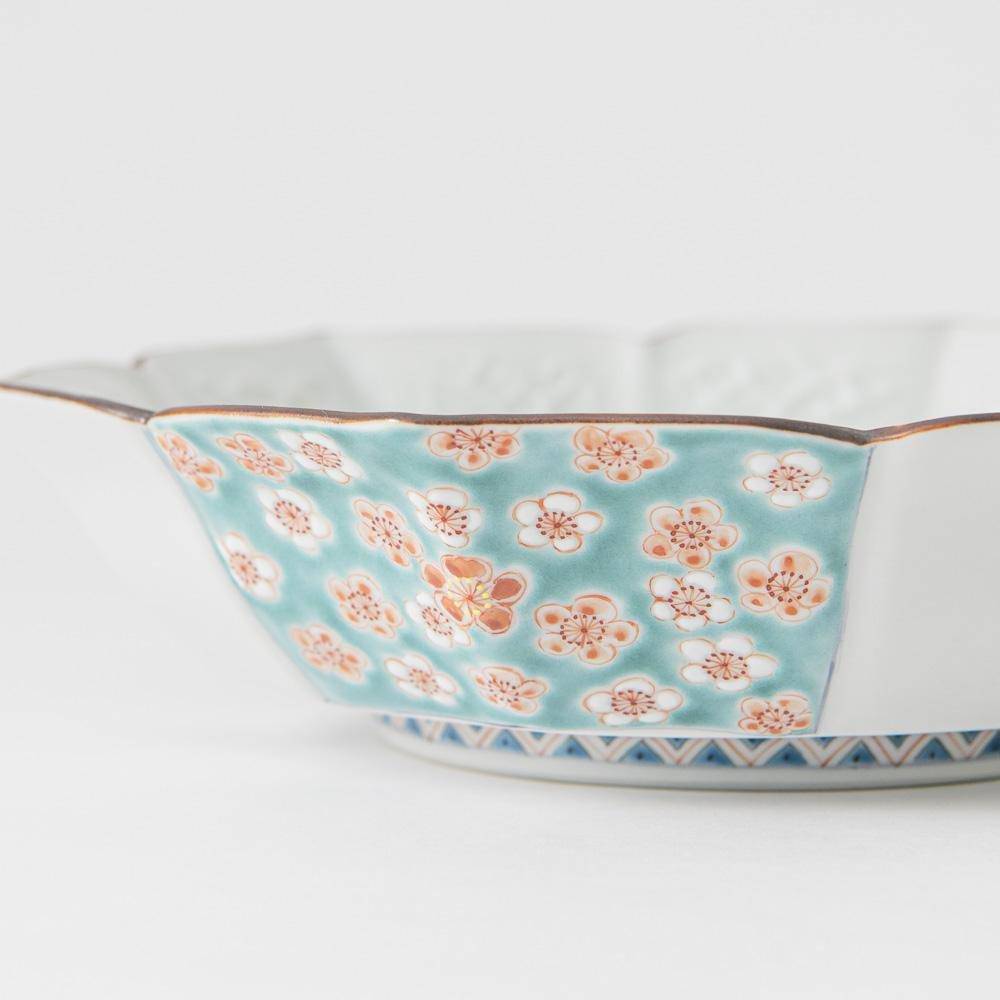
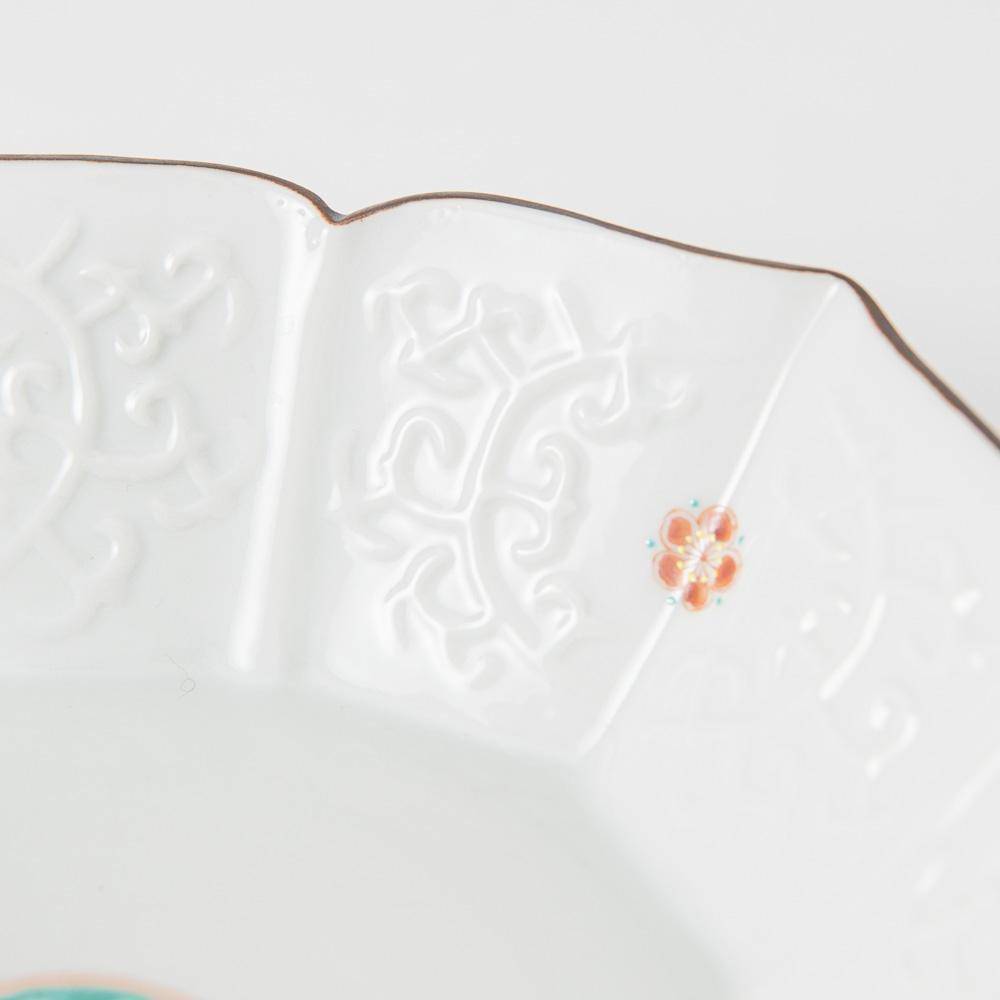
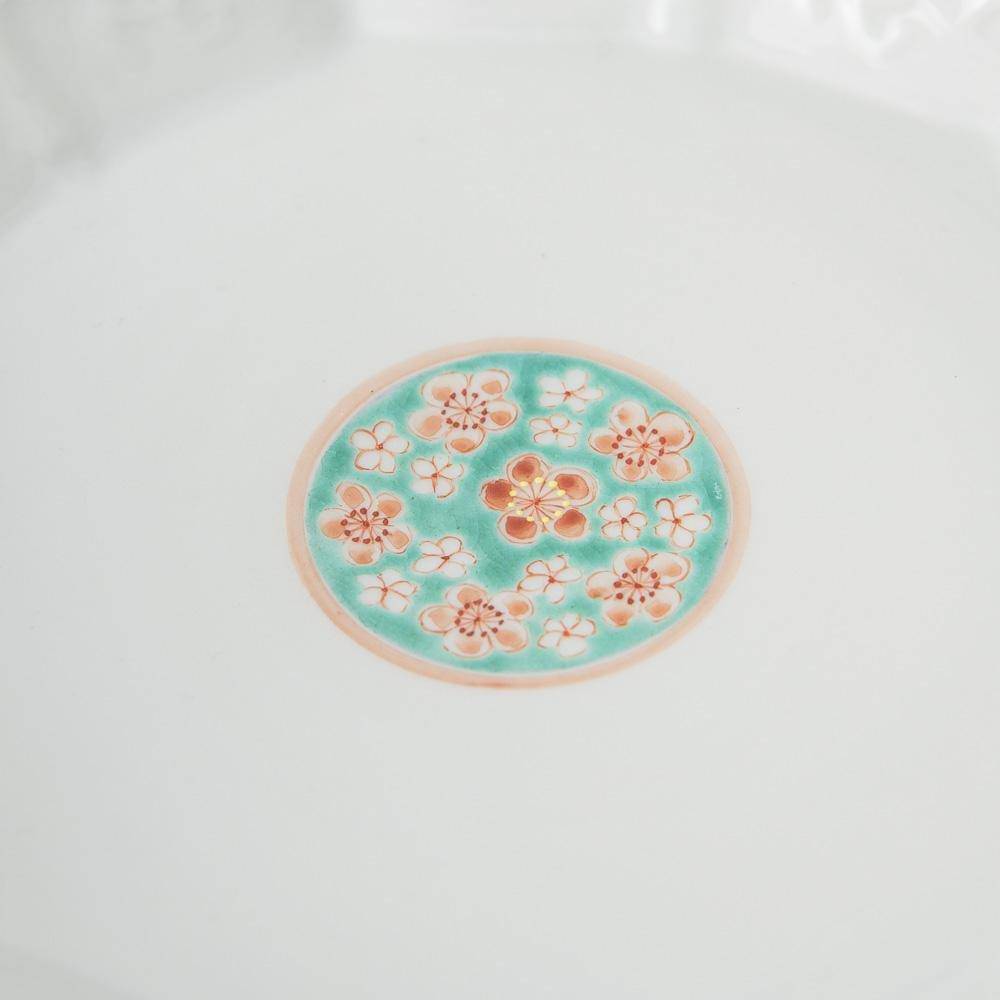
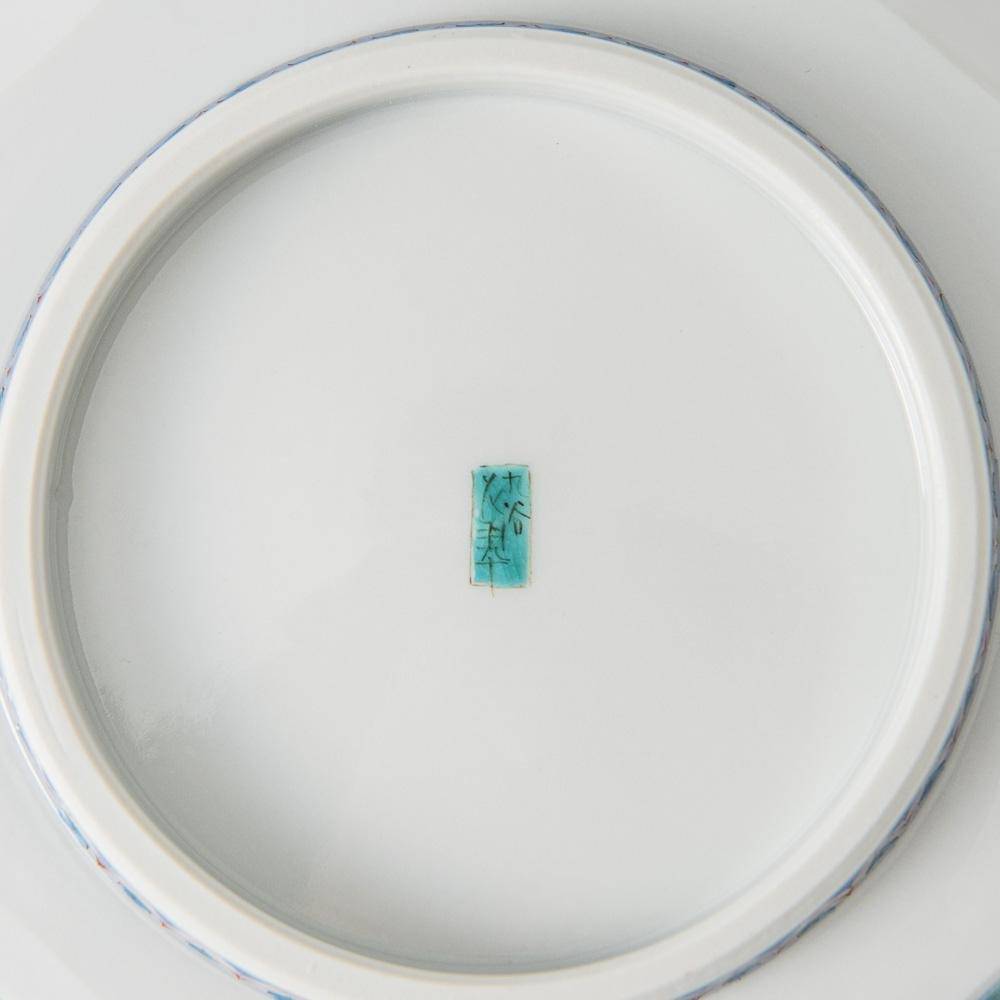
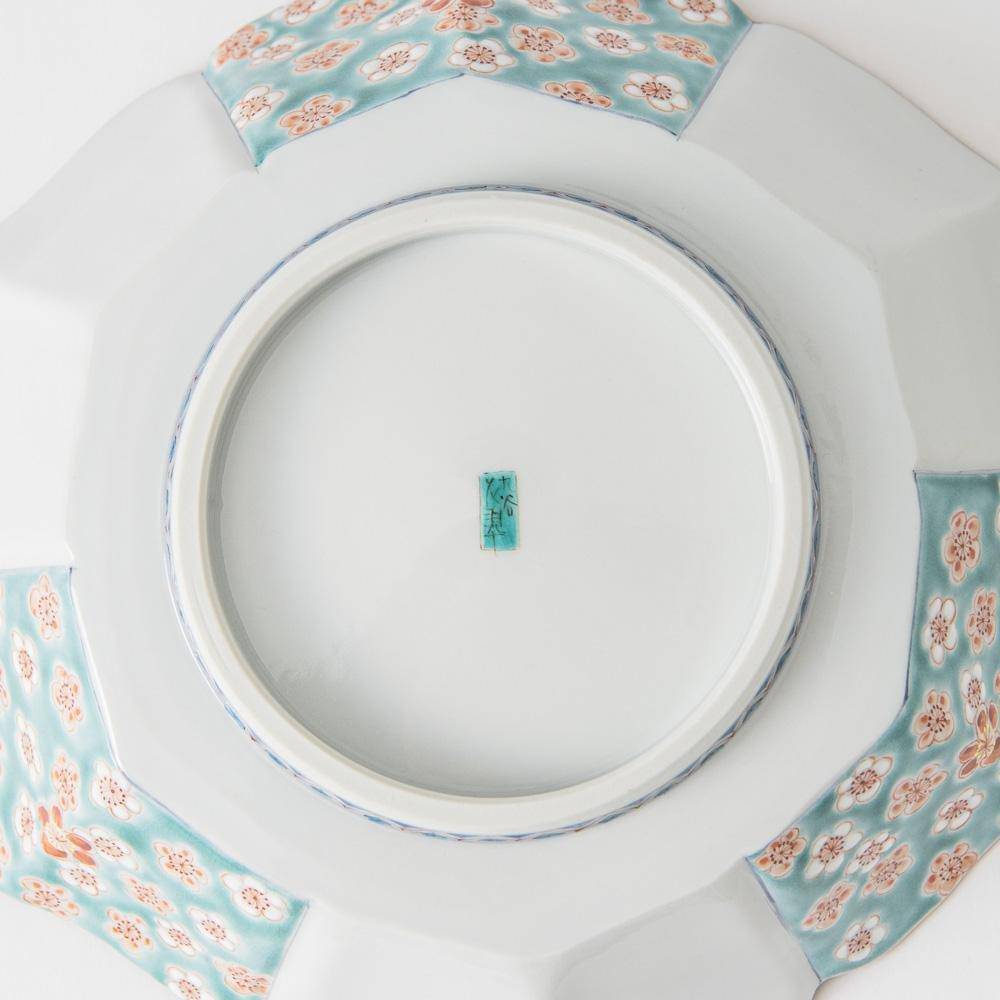
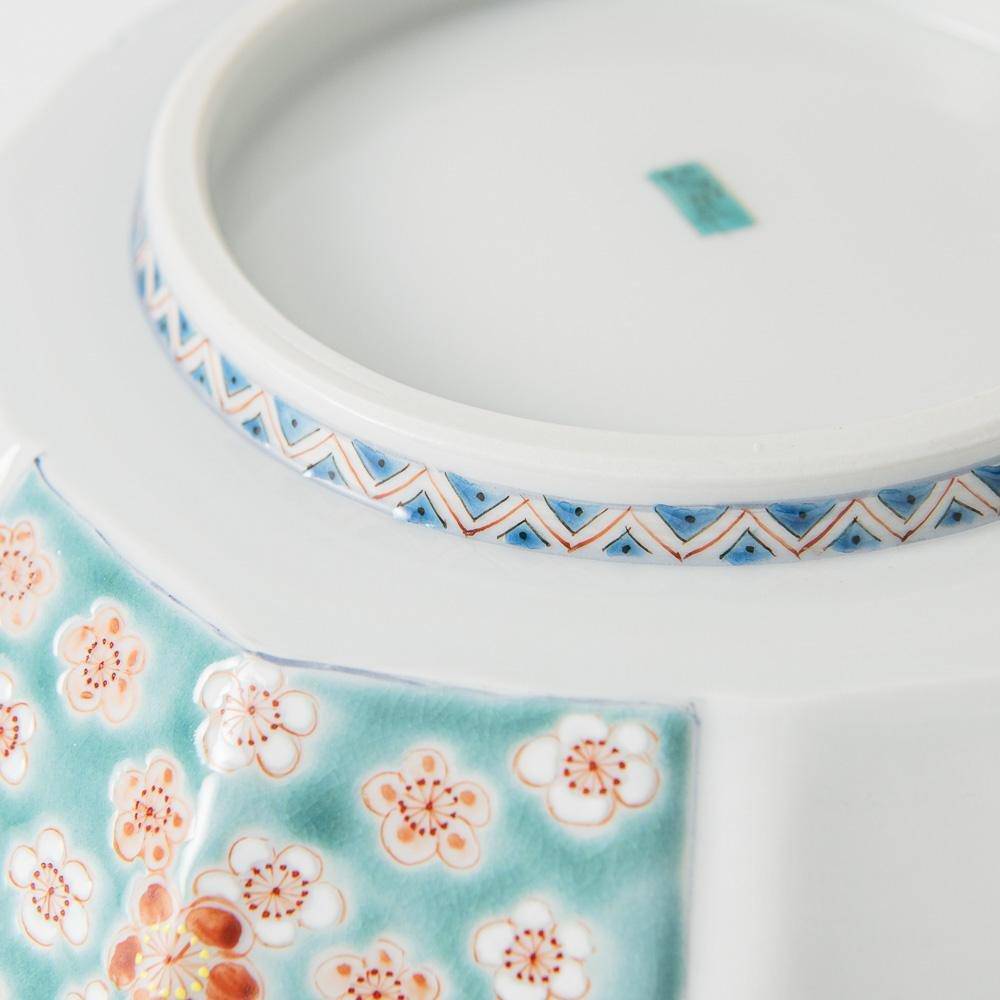
Plum Flower Large Bowl
Estimated Shipping Widget will be displayed here!
This elegant flower shaped large bowl features hand-painted plum motifs and raised arabesque patterns. The painting stands out beautifully on the white porcelain, as you can see the painted part is slightly thickened by using a brush for painting. A fine pattern is drawn on the foot, making it a beautiful bowl from any angle.
Both plum blossoms and arabesque are auspicious motifs, symbolizing longevity and prosperity.
Inspired by the rich tradition of Kutani ware, artist Kasui Okamemasa continues to refine her craft through experimentation while exploring new creative expressions. Each hand-painted motif is crafted with care, offering a quiet moment of appreciation for nature’s simple beauty.
This piece is perfect as a serving bowl for salads, nimono(simmered food), desserts, and fruits.
It is great for an everyday use as well as a gift for anyone who loves Japanese arts and crafts.
DETAILS
| Quantity | 1 |
| Size | D 21.9 cm (8.6 in) x H 5.8 cm (2.3 in) |
| Material | Porcelain |
| Microwave | Yes |
| Dishwasher | Yes |
Crafts
Kutani ware is a pottery produced in the Kaga region of Ishikawa Prefecture, with a history spanning over 350 years. It is characterized by the heavy brilliance of the five colors of navy blue, red, purple, green, and yellow that are applied to the bold and daring lines. Its long history has evolved through the tireless efforts and enthusiasm of people who have sought innovation while maintaining tradition.
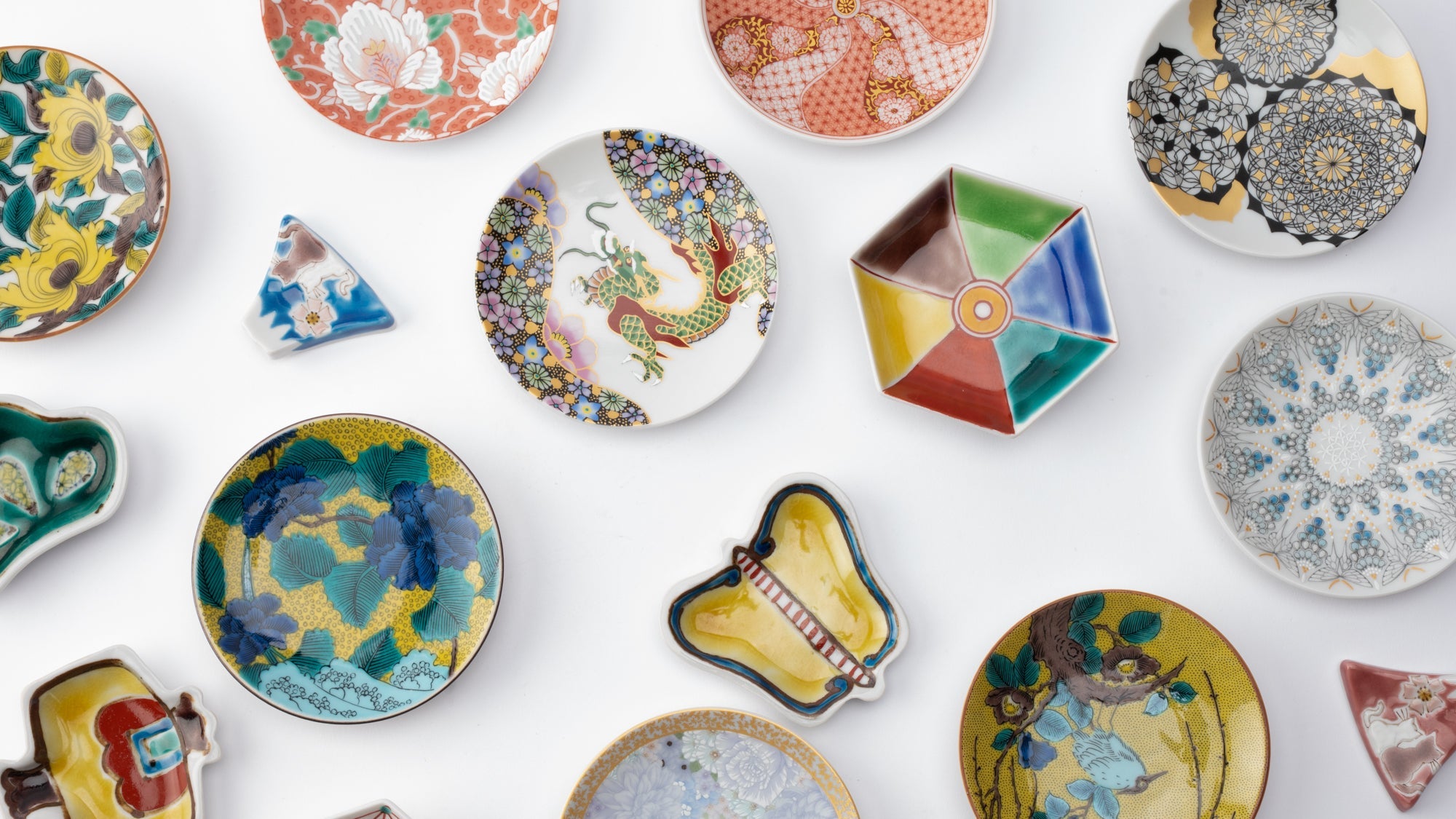
Choose options












Large Bowls
With their generous diameters, large Japanese bowls are capable of fulfilling a wide range of dining functions. Here, you'll find serving bowls for main dishes and sides, as well as salad bowls, pasta bowls, and more. Mix and match designs and styles to complement any aesthetic and round out your kitchen collection.
This category includes bowls with diameters over 21 cm (8.3 in).
